- Quick Read
- Deep Read ( 5 Min. )

Why is Christian Science in our name?
Our name is about honesty. The Monitor is owned by The Christian Science Church, and we’ve always been transparent about that.
The Church publishes the Monitor because it sees good journalism as vital to progress in the world. Since 1908, we’ve aimed “to injure no man, but to bless all mankind,” as our founder, Mary Baker Eddy, put it.
Here, you’ll find award-winning journalism not driven by commercial influences – a news organization that takes seriously its mission to uplift the world by seeking solutions and finding reasons for credible hope.
Explore values journalism About usMonitor Daily Podcast
- Follow us:
- Apple Podcasts
- Spotify
- RSS Feed
- Download
TODAY’S INTRO
Taylor Swift’s ode to joy
 Mark Sappenfield
Mark Sappenfield
In today’s “Why We Wrote This” podcast, we look at the astonishing success of Taylor Swift. She is authentic. She is generous. She is the queen of unabashed, exuberant girlhood.
But you only need to look at some of the other stories in today’s issue to see another reason. From Gaza to Argentina to the COP28 climate summit, the world seems to be nothing but uncertainty and doubt. Of course, the world has ever been thus. But amid social media feeds and toxic politics, there is a weariness to the world that feels different and unyielding.
Into this gloom comes the sequin-bright smile of Ms. Swift, as well as the love and community her concerts inspire. It is the opposite of escapism. It is a note of the song we all sing, the chords of sincerity and joy shared by every human heart.
Share this article
Link copied.

Help fund Monitor journalism for $11/ month
Already a subscriber? Login

Monitor journalism changes lives because we open that too-small box that most people think they live in. We believe news can and should expand a sense of identity and possibility beyond narrow conventional expectations.
Our work isn't possible without your support.
Is anywhere safe in southern Gaza?
We wrote yesterday about the pressure on Israel to protect Palestinian citizens. But Israel’s efforts to direct people in Gaza to safe zones are proving confusing and hard to access. Everywhere are bombs and bullets. Before the cease-fire, the war was bad. Now, there seems nowhere to go.
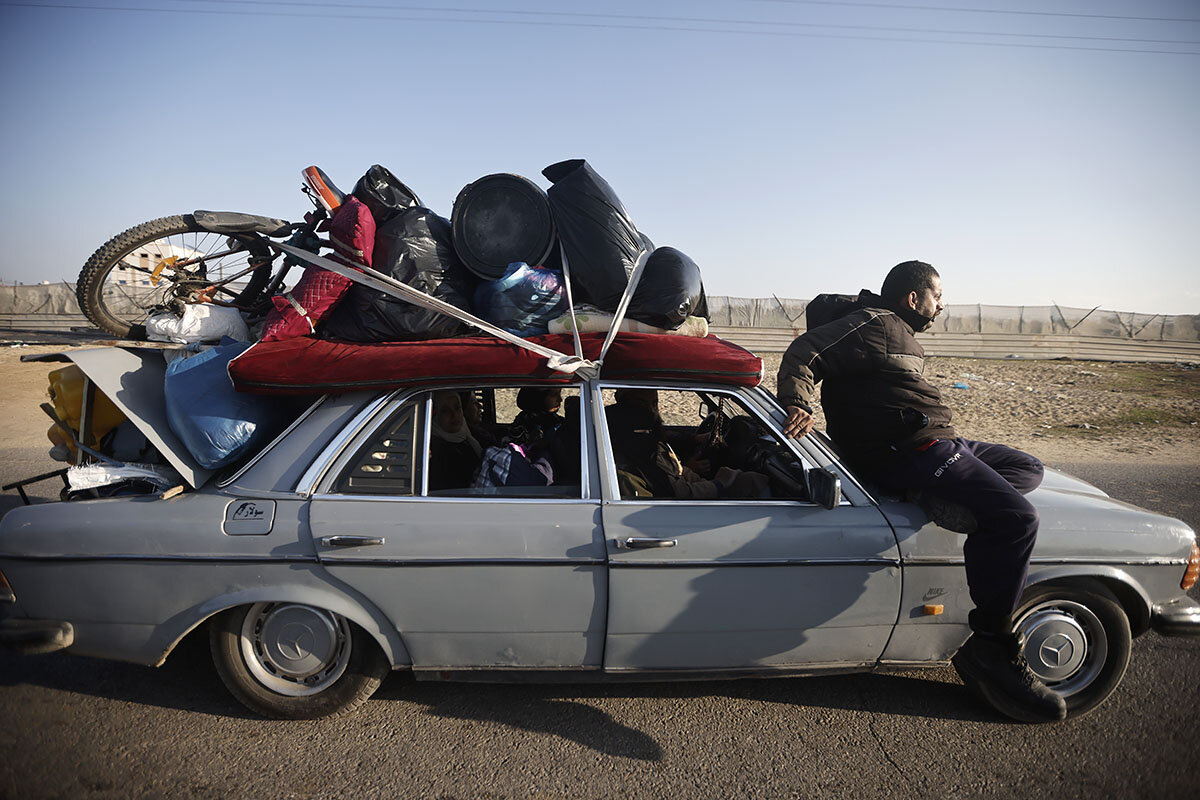
-
By Ghada Abdulfattah Special contributor
-
Taylor Luck Special correspondent
As Israel’s military pushes further into southern Gaza, engaging in urban warfare with Hamas, Palestinians say they are left with nowhere to go and are isolated from relatives they can no longer contact. With the army dropping evacuation order leaflets in Khan Yunis and elsewhere, residents no longer know where to turn, where to find shelter, or if they will survive the night.
In the southernmost town of Rafah, dozens of displaced families and individuals are living in the streets, scrambling for makeshift shelter as Israeli drones buzz overhead.
The epicenter of the fighting and chaos is in Khan Yunis, where Israel’s ground operation entered its eighth day since the collapse of a weeklong cease-fire and where Israeli forces engaged in house-to-house combat with Hamas. Khan Yunis is the hometown of Hamas leader Yahya Sinwar, and Israel says Hamas officials and battalions are based in tunnels beneath the city.
Reena Abu Nahla and her two children were among the thousands caught in the fighting and unrelenting bombing in eastern Khan Yunis.
“The ground is shaking; there are nonstop airstrikes. We can’t sleep; my hand shakes,” Ms. Abu Nahla says. “I hold my two children in my lap at night. Every time there is a loud explosion, I hug them tightly.”
Is anywhere safe in southern Gaza?
As Israel’s military campaign pushes further south in Gaza, and Israel and Hamas engage in urban warfare, Palestinian residents say they are left with nowhere to go.
Reeling from the dashed hopes for an extended cease-fire, Gaza Palestinians say they are now under siege like never before – isolated from family members they can no longer contact and trapped in a rotation of neighborhoods as the Israeli army’s push cuts off one residential block from another.
With the Israeli army dropping evacuation order leaflets in Khan Yunis and elsewhere in southern Gaza – to which Israel instructed 1.2 million people to evacuate at the start of the war – Gaza Palestinians no longer know where to turn, where to find shelter, or if they will survive the night.
In the southernmost town of Rafah, dozens of displaced families and individuals are living in the streets, scrambling for makeshift shelter as Israeli drones buzz overhead.
As of Thursday, Israel’s military campaign in Gaza had displaced 1.93 million Palestinians, or 86% of the strip’s population, according to the United Nations, and killed more than 17,000 people, Gaza officials say.
On Friday the United States vetoed a U.N. Security Council resolution, sponsored by the United Arab Emirates, demanding an immediate humanitarian cease-fire. The vote on the resolution was 13 to 1, with Britain abstaining.
In southern Gaza, shelter is extremely scarce.
At Rafah’s Duwwar Al-Awda roundabout, or “circle of return,” located 500 yards from the Egypt-Gaza border, dozens of men, women, and children resorted to lying on collapsed cardboard boxes on the street under the open sky. They clutched themselves, hoping that no artillery shelling or airstrikes hit nearby.
At the UNRWA flour distribution center in Rafah, thousands of people stood outside Friday waiting to get a 25-kilogram sack of flour. But the United Nations said its aid distribution has halted in the rest of the strip.
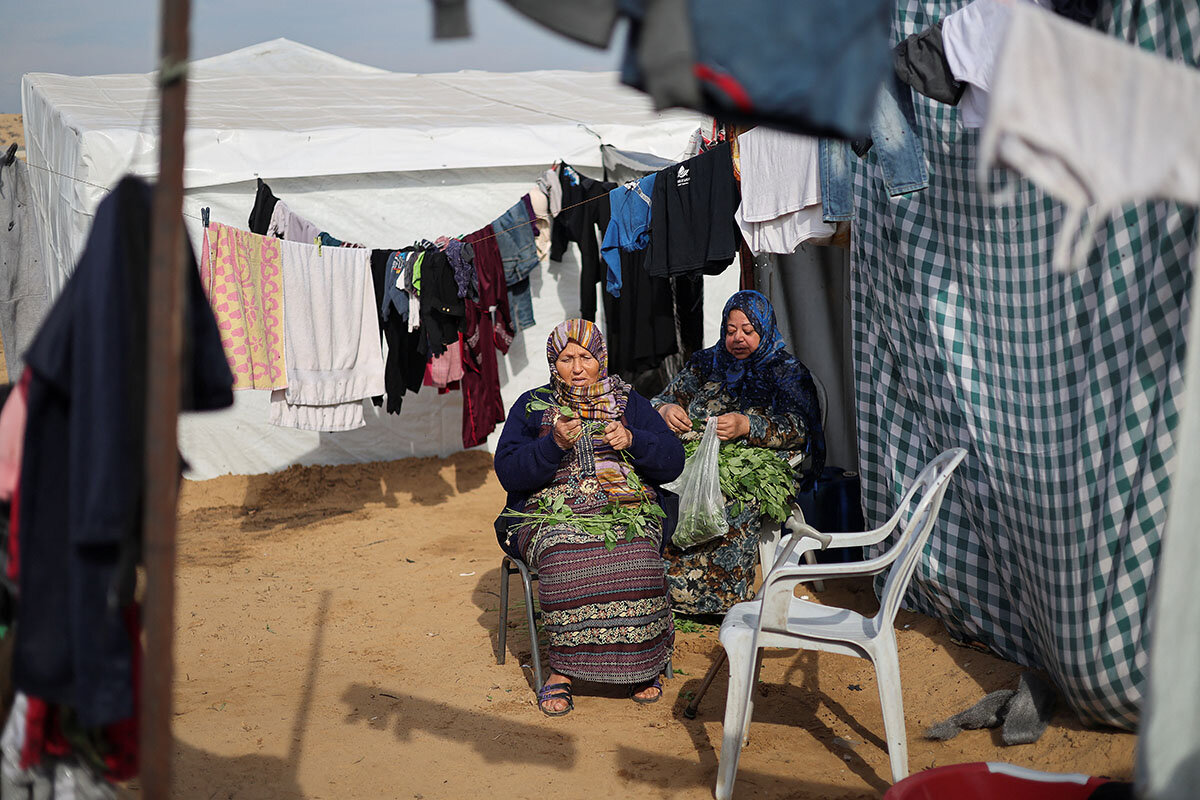
Complicating matters: Communications are down in large swaths of southern Gaza as part of Israel’s military campaign, adding to the worries of families split up and spread out across the southern half of the coastal enclave. Most do not know the fate of their children, parents, or siblings just a few miles away.
The epicenter of the fighting, bombardment, and chaos is in Khan Yunis, where Israel’s ground operation entered its eighth day since the collapse of the cease-fire, and where Israeli forces engaged in house-to-house combat with Hamas. Khan Yunis is the hometown of Hamas leader Yahya Sinwar, and Israel says Hamas officials and battalions are based in tunnels beneath the city.
“We can’t sleep; my hand shakes”
Reena Abu Nahla and her two children were among the thousands caught in the fighting and unrelenting bombing in eastern Khan Yunis.
They had returned to their family home in the Maan neighborhood of Khan Yunis on the first day of the cease-fire late last month in the hopes the lull in fighting would last and they would remain relatively safe.
Now the ground beneath them quakes nonstop, and explosions nearby have continued since the first airstrike in the area minutes after the cease-fire collapsed last Friday.
“The ground is shaking; there are nonstop airstrikes. We can’t sleep; my hand shakes,” Ms. Abu Nahla says. “I hold my two children in my lap at night. Every time there is a loud explosion, I hug them tightly.”
At night, Gaza’s skies turn red and orange as if on fire. “The smell of gunpowder is very strong; it is everywhere. There are nonstop rings of fire,” Ms. Abu Nahla says.
As part of its southern campaign, and amid U.S. pressures to reduce the number of civilian casualties, the Israeli military published on its website and social media channels a map dividing the enclave into 600 numbered blocks. It told Palestinians in Gaza to follow updates from its social media channels on when to evacuate the numbered blocks, creating confusion among Gazans – even those very few able to read the map.
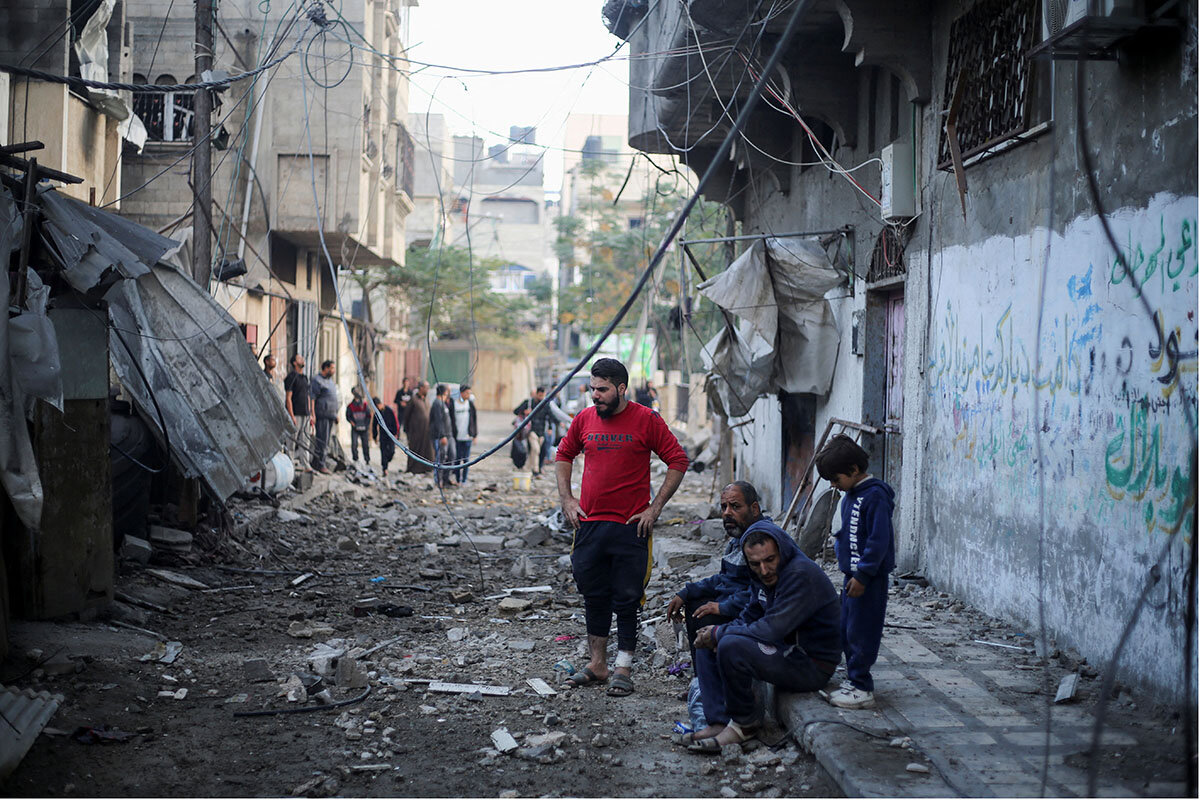
Due to electricity supply cuts and communication network outages imposed by the Israeli military, the vast majority of Gaza residents are without internet access and unable even to see the detailed map. The few that are say the tiny blocks and digits are difficult to read and do not always correspond to geography.
“I managed to connect to the internet ... but I saw people on the street running and moving desperately,” not knowing where to go, says Hend Abu Aisha.
The Israeli army’s maps do not indicate clear safe zones or areas for evacuees to head to.
“This is the third time”
Ms. Abu Aisha, from northern Gaza, received an airdropped leaflet to vacate her parents’ home in the Khan Yunis neighborhood of Al Qarara, where she had just arrived seeking refuge during the cease-fire. The leaflets described the area as a “conflict zone.” It was her third displacement since the war began.
A few hours after her family evacuated the neighborhood, Israeli forces began an intense bombardment of the area, flattening residential buildings and killing dozens.
“This is the third time. I feel hopeless and helpless,” she says, “I feel like we are being humiliated.”
Workers at Dar al-Salam Hospital report gunbattles between Hamas and the Israeli army, and Israeli snipers firing shots into the hospital, preventing emergency workers from carrying out their work or treating patients.
“In the hospital we are walking on carpets of bullet shells,” says one nurse at Dar al-Salam Hospital.

Another center of the fighting is Deir al-Balah, which up until the Israeli southern campaign had been among the least-hit towns in Gaza. On Sunday, as Israeli forces approached and began to encircle Deir al-Balah after the cease-fire collapsed, Om Rizq Safi, a woman in her 50s, left her hometown.
Her family narrowly avoided incoming Israeli tank columns as their driver took a series of side streets and alleys, zigzagging east and west to finally get them south to Khan Yunis.
Ms. Safi, her sons, and their wives and families – a total of 20 people – sought refuge at her sister-in-law’s house in central Khan Yunis. Within three days the Israeli military dropped leaflets on the home and surrounding area ordering residents to evacuate.
Ms. Safi was forced to pick up once again, carry mattresses, and move further south, although she has nowhere to go.
“I am scared that the conditions are becoming increasingly dire. I do not know what will happen,” she says, saying the plight echoes the Nakba, the violent displacement of Palestinians during the 1948 Arab-Israeli war. “My parents told me about the atrocities of 1948, but I don’t think it’s the same. It is worse.”
Two of Ms. Safi’s adult sons and their families remain in Deir al-Balah. She has lost communication with them since last Friday.
Her last words to them: “I told my children, ‘If we are meant to live and meet each other again, we will.’”

Almighty US dollar? New test in Argentina.
Argentines would just like prices to stop going up 143% a year, please. Their new president has a plan: Make the U.S. dollar the national currency. Is that really a good idea? Citizens yearning for stability hope so.

- Quick Read
- Deep Read ( 5 Min. )
-
By Max Klaver Special contributor
-
Whitney Eulich Special correspondent
When incoming Argentine President Javier Milei is inaugurated Sunday, his first order of business will be the economy.
The libertarian was first elected to public office just two years ago, and he quickly gained a national following as a congressman thanks to his virulent, anti-establishment rhetoric. He won the presidential runoff this fall with 56% of the vote, in part due to radical policy proposals like replacing Argentina’s national currency, the peso, with the U.S. dollar.
Mr. Milei wouldn’t be the first Latin American leader to move toward dollarization – Panama, Ecuador, and El Salvador all officially use the U.S. currency. But their reasons for turning to the dollar have differed, and the dollar’s global stability isn’t always a long-term salve. Mr. Milei’s dollarization plan comes after years of money-printing in Argentina to finance expenditures, driving up inflation to a 30-year high. No matter what shape his economic policies take, Argentines are clamoring for stability.
“That’s why Milei was elected,” says Britta Crandall, who teaches political science at Davidson College and has written about dollarization. “It doesn’t necessarily have to be dollarization, but Argentines can’t live in chronically high inflation. It’s inordinately difficult. This was an easy election to say, ‘There’s one issue here,’ and prices were it.”
Almighty US dollar? New test in Argentina.
Each week, Buenos Aires grocer Jenny Contreras updates her price list, doing everything she can to keep costs low. That’s gotten increasingly difficult in recent years: Inflation is currently running at an annual 143%, and Ms. Contreras uses a chalkboard to let shoppers know the avocado they paid for late last month will cost them 12 cents more today.
Ms. Contreras, like many in Argentina, is exhausted by the country’s economic rollercoaster. She is allowing herself to hope that this weekend’s inauguration of incoming libertarian President Javier Milei might bring some relief, though she is skeptical about some of his more radical policy proposals.
“Things will improve because they have to improve,” she says.
Mr. Milei was first elected to public office just two years ago and quickly gained a national following as a congressman thanks to his virulent, anti-establishment rhetoric. He won the presidential runoff with 56% of the vote, in part due to dramatic plans to close the Central Bank and replace the Argentine peso with the U.S. dollar.
His dollarization plan is designed to end years of money-printing to finance expenditures by successive governments, which has driven inflation to a 30-year high. It also taps into Argentina’s complex relationship with the greenback, which many here use both to save and to purchase durable goods, like cars and homes.
Mr. Milei wouldn’t be the first Latin American leader to move toward dollarization – Panama, Ecuador, and El Salvador all officially use the U.S. currency. But when Mr. Milei becomes president on Sunday, he will become the first leader seriously proposing dollarization in more than two decades.
“There’s one issue here”
Experts agree that regardless what path his government takes, the Argentine economy is the new government’s top priority.
“That’s why Milei was elected,” says Britta Crandall, who teaches political science at Davidson College in North Carolina and has written about dollarization. The solution “doesn’t necessarily have to be dollarization,” she says, “but Argentines can’t live in chronically high inflation. It’s inordinately difficult. This was an easy election to say, ‘There’s one issue here,’ and prices were it.”
Argentina has a long history with the dollar, although it has never officially dollarized its economy. For a decade starting in 1991, it pegged the peso to the U.S. dollar at a 1-to-1 rate. Many Argentines remember that period as a golden era, giving the idea of dollarization added luster today.
“It was a marvelous time,” says José Antonio Doval, a hairdresser in Buenos Aires. “Everyone was happy because we all earned well.”

But there are plenty of skeptics who recall that when the government began to print money to cover its budget deficit, the peso lost its parity with the dollar, and that when people tried to withdraw their dollar savings from the bank, they caused a bank run. Many Argentines lost their life savings in the currency crash.
“They closed all the banks. People were crying in the streets, begging the banks for their money,” recalls Javier Campo, a mechanic in Buenos Aires who is less enthusiastic about Mr. Milei’s dollarization proposal. The financial collapse in December 2001, which saw Argentina default on its sovereign debt, was followed by a political crisis when five presidents churned through office in the span of two turbulent weeks.
Seeking stability
“Dollarization has the huge benefit of providing Argentina with something it historically lacked – a stable currency,” says Eugenio Marí, chief economist at the conservative think tank Liberty and Progress Foundation.
“Unfortunately, our history shows that we will change laws to reduce the independence of the central bank,” Dr. Marí says, which has allowed governments to strong-arm the central bank into printing money.
“What’s the maximum independence we can give to our central bank? The central bank of another country,” such as the United States, he points out. But polls show that fewer than half of Argentines think dollarization is feasible or even desirable. For many, the question of sovereignty hangs heavy.
Latin America is the only region in the world where economies have fully dollarized – other than the small island nation of Palau in Oceania – partly because of trade and geography, says Dr. Crandall. Panama turned to the dollar in 1904 for political reasons. In Ecuador, an economic collapse led to its dollarization in 2000. And El Salvador followed its own path to the dollar a year later, as a stable economy looking to enhance trade with the U.S.
But “wanting a closer relationship with the U.S. is not common in Latin America right now,” says Dr. Crandall. “Many are looking more toward South-South diplomacy, relations with India, China, and others.”

Losing control
Nonetheless, the big-picture benefits of dollarization are obvious: Inflation dramatically decreased in Ecuador after dollarizing, and Panama, El Salvador, and Ecuador have all enjoyed price stability and low interest rates.
Ecuador’s case was arguably most similar to Argentina’s today – a society with little faith in its currency, where inflation was skyrocketing and purchasing power was diving. Ruth Arroyo recalls that from one day to the next, in her final semester of her doctorate studies in Quito, she watched her savings disappear as banks shuttered following widespread runs – and her university closed its doors entirely, causing her to lose years of academic credits.
“No government would even think about taking away our dollars today,” she says, now a retired professor after receiving a scholarship to relaunch her studies in the U.S. following Ecuador’s economic collapse.
Simple as dollarization may sound, its implementation is far from straightforward. “To dollarize, you need dollars, and precisely what Argentina lacks is dollars,” says Martín Burgos, economics department coordinator at the Floreal Gorini Cultural Center for Cooperation.
At the same time, when a government dollarizes its economy, it cedes all control over its monetary policy to the U.S. Federal Reserve. It cannot devalue its currency to win comparative trade advantages, for example.
“When an external crisis hits, dollarization can make it last longer,” says Simon Cueva, a former Ecuadorean finance minister who was in office for part of the pandemic.
“With COVID, many neighbors were able to devalue their currency quickly, while in Ecuador it was much more complicated,” he says.
Some blame the dollar for slower economic growth in Ecuador and El Salvador. And the spreading reach of international criminal organizations in the region poses new problems: Tucked between coca producers Colombia and Peru, Ecuador’s dollarized economy has become an appealing money-laundering destination.
Though Mr. Milei has claimed his flagship dollarization plan is “nonnegotiable,” his Cabinet appointments suggest a more pragmatic approach to the economy – at least in the short term.
Luis Caputo, a mainstream figure who has served as finance minister and Central Bank chief in past administrations, says that adopting the greenback is a “medium-term” objective.
Whatever form the currency stabilization ultimately takes, many – supporters and detractors alike – believe inflation will increase in the short term.
“Any stabilization and normalization program for the Argentine economy must adjust prices,” says Dr. Marí. And that, he warns, means continued inflation.

‘My responsibility to be hopeful’: The Climate Generation at COP28
Our Climate Generation series has profiled young people across the world who are working to be a part of the solution. Some of them are at this week’s COP28 summit. So we checked in with them and found that they’re, as always, full of energy, ideas, and ambition.
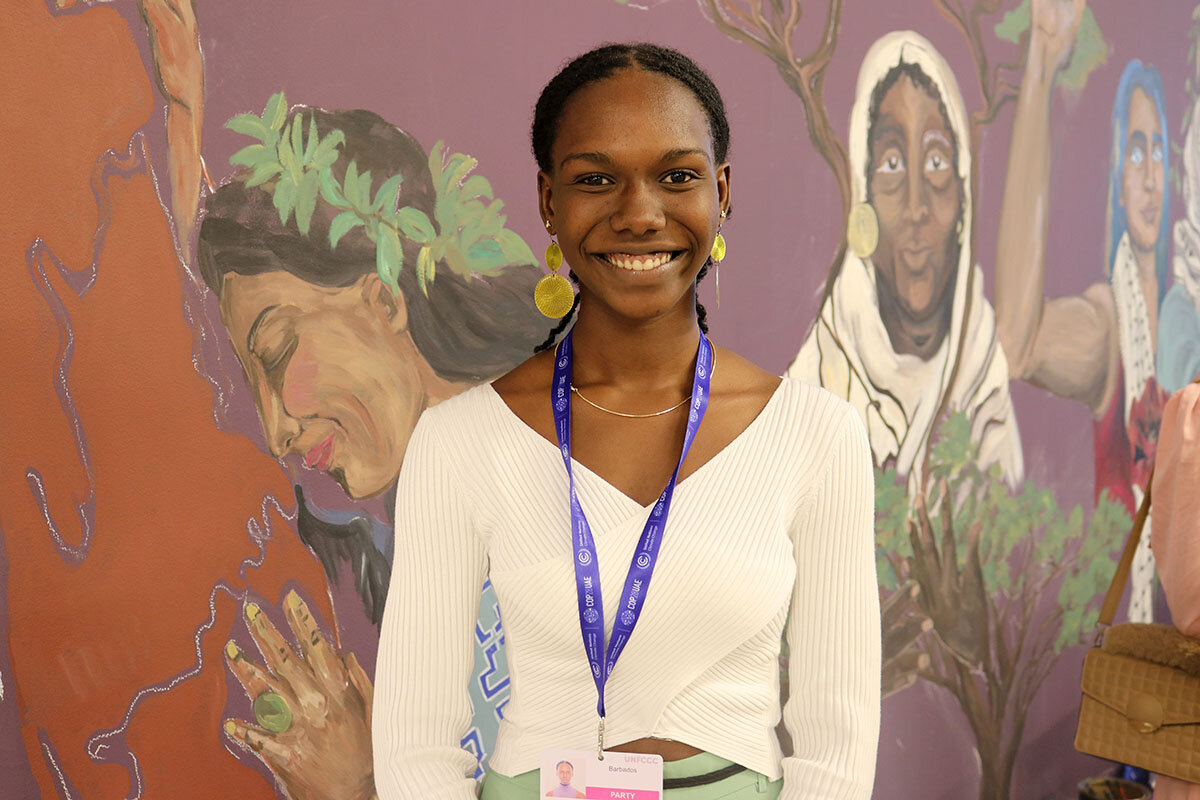
- Quick Read
- Deep Read ( 5 Min. )
At the annual Conference of Parties, or COP, underway in the United Arab Emirates, skepticism about world leaders’ agreeing to real action against climate change might be at an all-time high. Not least because the host is an oil- and gas-producing country.
But many young people milling around the youth pavilion in Dubai are also pushing to be heard above the cynicism and apathy. Not least because they are the generation whose lives will be most influenced by a warming planet.
The Christian Science Monitor is in the middle of publishing a special series called The Climate Generation, about the cohort born since 1989, when consciousness of children’s rights and global warming began to intersect. At COP28, we met up with three of them whom we profiled in our series: Naomi Cambridge from Barbados, Deon Shekuza from Namibia, and Farzana Faruk Jhumu from Bangladesh.
They do not shy away from voicing their criticisms about this conference. But they also say they have no choice but to push for change. “It is my responsibility to be hopeful and to be there for [my country],” says Ms. Jhumu.
‘My responsibility to be hopeful’: The Climate Generation at COP28
Fresh off 21 hours of travel and two flights from her home in Barbados to “the farthest I have ever been,” Naomi Cambridge tackles the first day of her first-ever Conference of Parties, or COP, powered by “adrenaline and hope.”
Like many young activists balancing their climate work and university studies, she spent hours on the way to Dubai cramming for end-of-semester university exams waiting for her next week. At the climate conference Tuesday, she smiles and waves down colleagues she had previously only met via Zoom, as they push for commitments to phase out fossil fuels and financing for developing countries.
“We are not all starting from an equal playing field or the same starting line,” Ms. Cambridge said of developing nations’ struggle to access or afford renewable energy technologies – a major concern. “It is our generation’s role to push for climate justice.”
Two dynamics hit her within her first hour here: inclusivity and the “influx” of oil and gas firm lobbyists and PR firm handlers. “Being at COP at an oil- and gas-producing country is a bit of a paradox, but it is not necessarily a negative thing,” she says. If the United Arab Emirates and other oil producers “are sincere,” it can “bring climate activists into the same room.”
This is the kind of credible hope that defines the Climate Generation, as the Monitor chronicled in a global project about the cohort born since 1989, when consciousness of children’s rights and global warming began to intersect. Here at COP28, we met up with three of these young change-makers to hear how the conference is playing out from their perspectives.
Public cynicism and skepticism abounded even before this COP opened in Dubai, with the world set to miss its 1.5-degree-Celsius target. Climate apathy is prevalent among young people, which is why Ms. Cambridge has set out to counter it at COP. “Hope is the fundamental thing that spurs action. We need action; therefore we need to be powered by hope,” she says.
And if, as it seemed on Friday, rich developing nations and oil producers are digging in their heels and refusing to grant concessions to developing nations?
“All the more reason for youth to be here. Our main role here is to hold the officials at COP28 accountable,” she says.
He’s nonstop
Namibian Deon Shekuza darts from negotiation rooms to panels to pavilions with a bounce in his step, somehow locked onto both his phone and everyone around him, stopping every minute to wave or clasp hands with an acquaintance.
Since he’s an eight-time veteran at COP, you might think he runs the place.
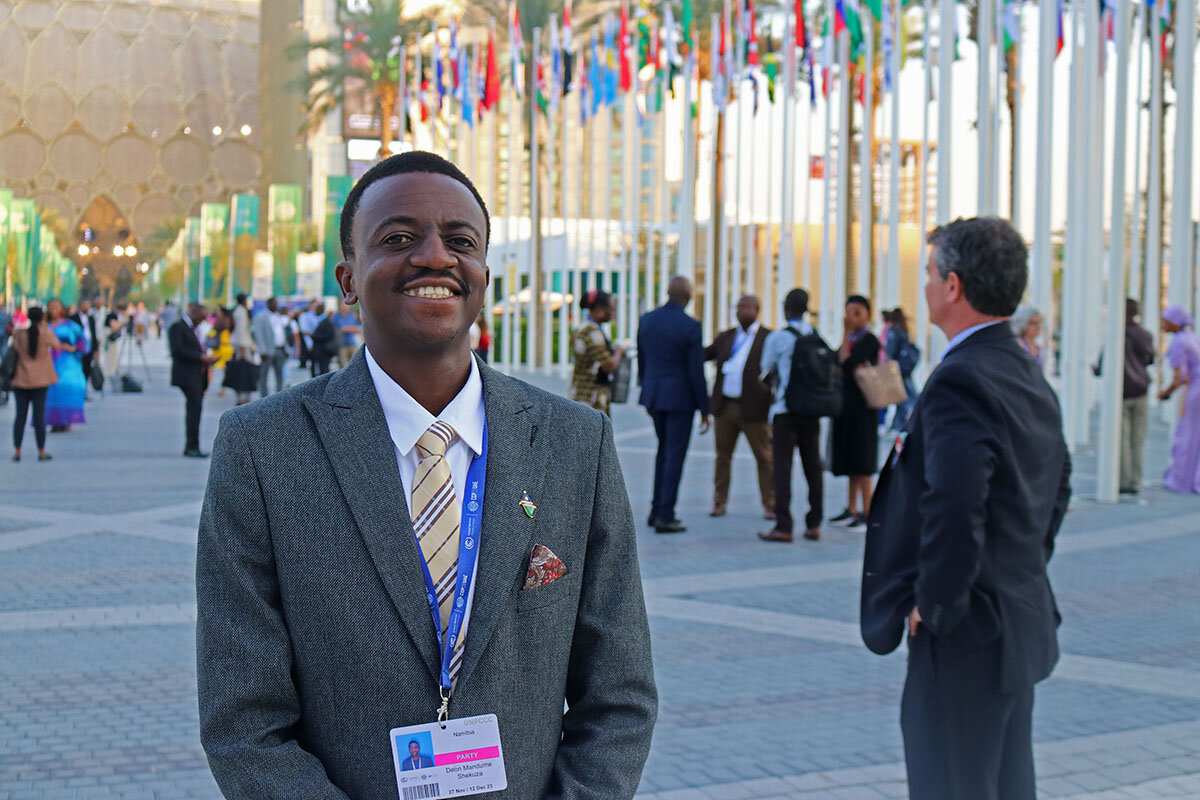
As a climate negotiator for Namibia focusing on the issue of a just and inclusive transition, he is splitting his time advocating for adaptation funding for Africa, negotiating at odd hours day and night, presenting young Namibians’ views at panels, and guiding first-time African youth COP-goers under his wing.
It is exhausting. But his energy and voice do not falter. Neither does his smile.
“This is the only forum where all our voices, all nations, on paper are equal,” he says in between shaking hands with a delegate. “Namibia has a voice in the process, young people have a voice in the process, and we must take advantage of this opportunity and keep talking and acting to push for change every way we can.”
There have been setbacks. He describes the big money pledges and announcements by the COP28 organizer, the UAE, as “a distraction,” sizzle without substance. He worries too about his country’s over focus on green hydrogen as its climate response, and the conference’s complete absence of attention on adaptation financing for developing countries.
Then there is the exclusivity: closed-door meetings, delegates and negotiators being cordoned off into hallways for hours as princes and world leaders arrive. Lobbyists are everywhere.
On Tuesday, the COP28 presidency booted Mr. Shekuza and other negotiators from the room they were convening in to make way for a high-level private-sector “event.” “I accidentally wandered into one VIP lounge, and I never saw so many world leaders and CEOs in my life,” he says. “They should be in the negotiating rooms, not closed rooms.”
But he still retains hope in the process, no matter this year’s outcomes.
“There is a global focus on climate right now. It is up to us to steer the negotiations and debate into the right direction,” he says.
Soaked school books
Farzana Faruk Jhumu has spent COP crisscrossing the 2-square-mile expo center, racing from the United Nations women’s pavilion, to informal negotiation talks, down to the Bangladesh pavilion, and to the UNICEF pavilions where she distributes brochures and speaks to visitors.
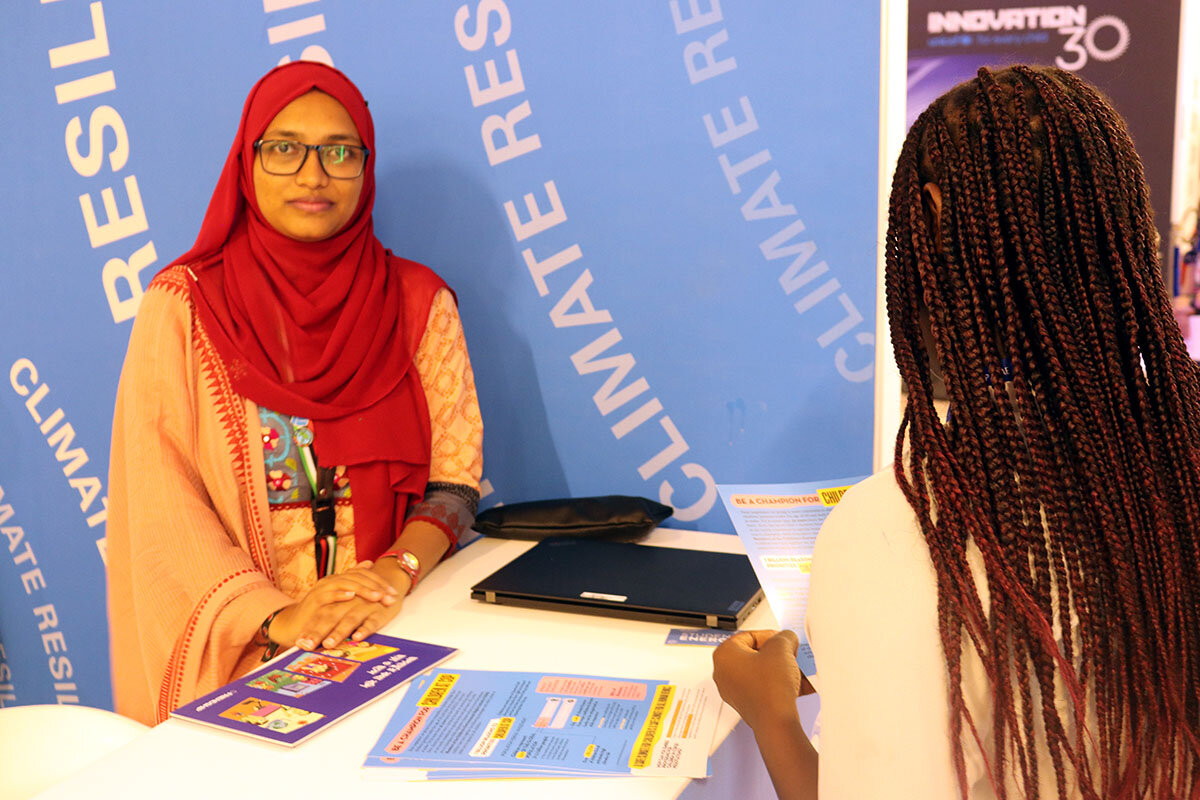
For the UNICEF youth ambassador and Bangladesh representative, conference days run from 9 a.m. panels to 11 p.m. reviews of negotiation texts before doing it all over again.
But the amount of oil and gas lobbyists – 2,347, a number she has memorized – and lack of progress in talks on fossil fuels, saving the 1.5-degree warming goal, and financing have been discouraging.
“They don’t even want to talk about a fossil fuel phaseout or the 1.5-degree mitigation goal,” she says. “We, the civil society, are fighting to put it in.”
She had initial high hopes for the “loss and damage” fund, a reparations fund for countries hit by climate disasters and a hard-fought gain by the developing world at last year’s COP. It was activated on the first day of this year’s conference.
But the financial commitments, some $600 million, remain well short of the $100 billion required. “When we need billions, we are getting millions,” Ms. Jhumu says. “If you put a charity box outside of COP, you could collect the same amount. It is sad and insulting.
“Every day in the morning I say, do I have to go here? Then I think of the women and children in my country who are building solutions for themselves.”
The image that keeps her going: Bangladeshi children drying textbooks in the sun after a flood, determined to continue learning to earn a better future.
“They don’t lose hope when they lose so much,” she says. “It is my responsibility to be hopeful and to be there for these people. They give me the energy to move forward.”

In Pictures
The surprising calm of Istanbul’s Grand Bazaar
When two Monitor reporters walked into Istanbul’s Grand Bazaar, they found themselves transported to a place they hadn’t expected – a surprising refuge from a tough reporting trip. This photo essay takes you along for the scents and scenes from an extraordinary visit.
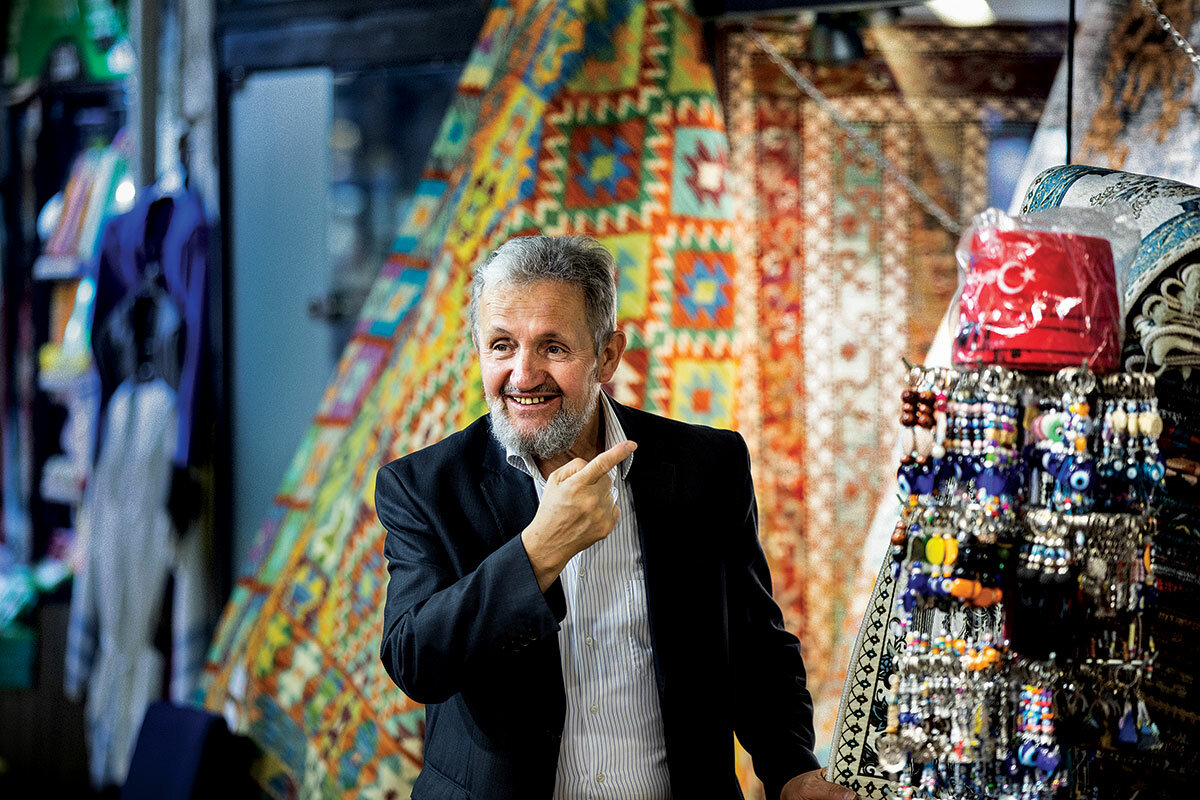
- Quick Read
- Deep Read ( 2 Min. )
-
Sara Miller Llana Staff writer
Staff photographer Melanie Stetson Freeman and I arrived in Istanbul physically and emotionally drained. We had been covering reconstruction efforts in Turkey following the devastating earthquake earlier this year.
We weren’t sure how we would manage the Grand Bazaar, one of the largest covered markets in the world. Everyone had warned us about its chaos and intensity. But as we strolled down alleyways lined with stalls selling carpets and teas, passing every manner of jewelry, shoe, and handicraft shop, it was unexpectedly calm.
Expand this story to view the full photo essay.
The surprising calm of Istanbul’s Grand Bazaar
Staff photographer Melanie Stetson Freeman and I arrived in Istanbul from Antakya, where we had been covering the reconstruction efforts following Turkey’s devastating earthquake earlier this year.
We were physically and emotionally drained. We weren’t sure how we would manage the Grand Bazaar, one of the largest covered markets in the world. Everyone had warned us about its chaos and intensity. But as we strolled down alleyways lined with stalls selling carpets and teas, passing every manner of jewelry, shoe, and handicraft shop, it was unexpectedly calm.
Vendors struck up friendly conversations with us, but they never pushed a sale. In fact, a visit to this market in the heart of old Istanbul was just the respite we needed. Later, we headed to the Spice Bazaar, built in the 1660s, where spices were set out like paints on an artist’s palette.
Sweets were on offer, too. My favorite was the displays of Turkish delight, also known as lokum, a jelled rose water candy flavored with lemon or mint or stuffed with pistachios, whose origins date back to the 18th century. Indeed, the whole experience seemed to transport us back to another century.
When it was time to move on, we boarded the Istanbul tram – and were catapulted back into 2023.
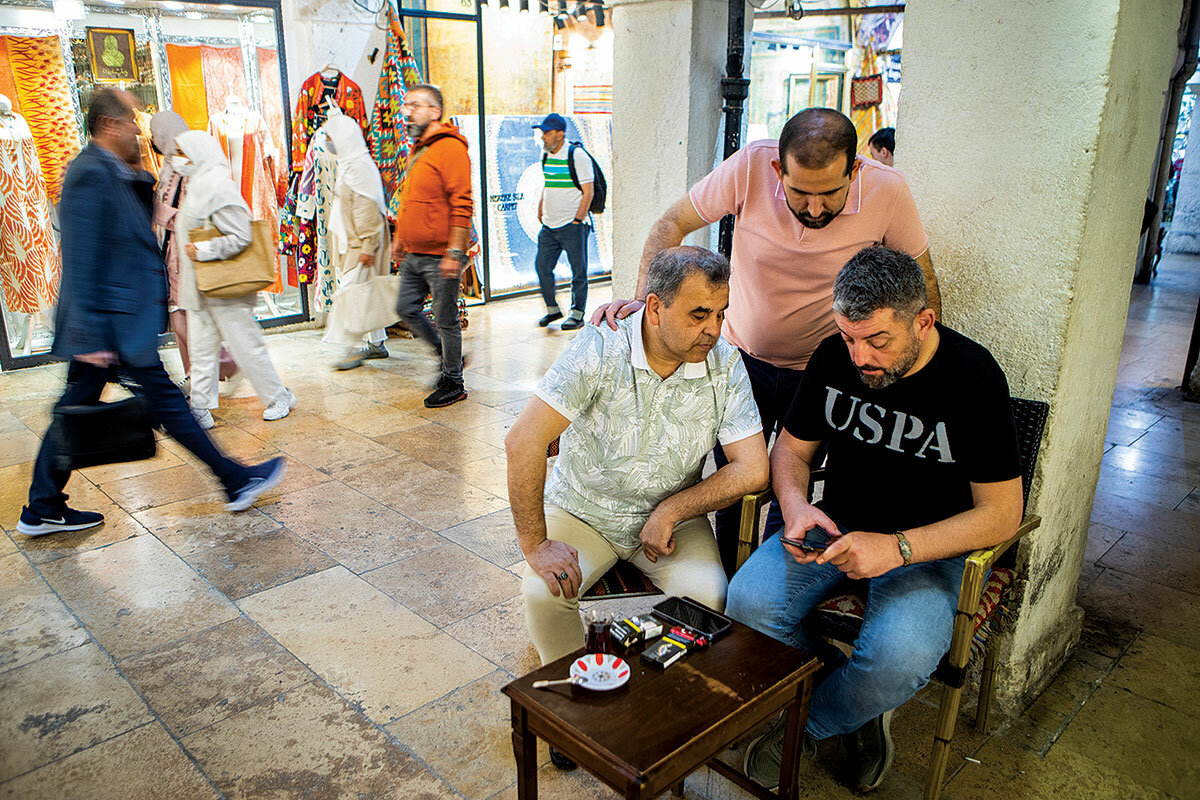
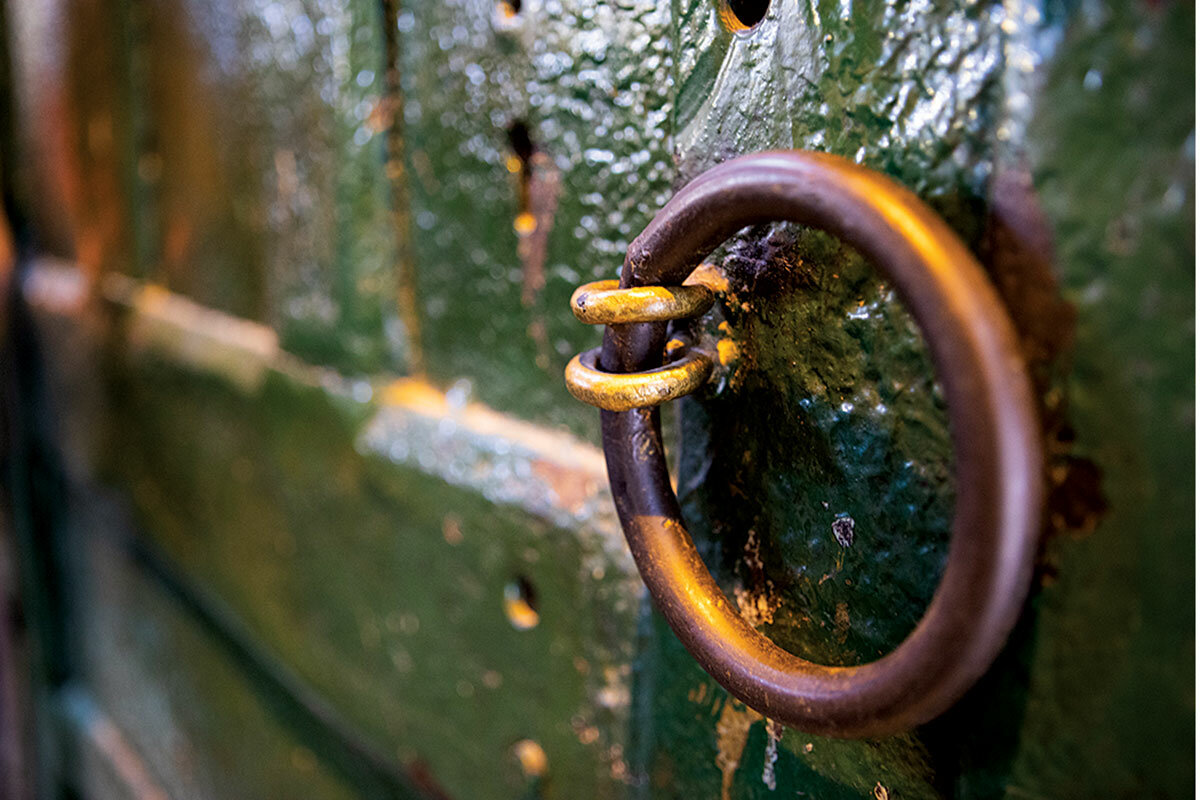
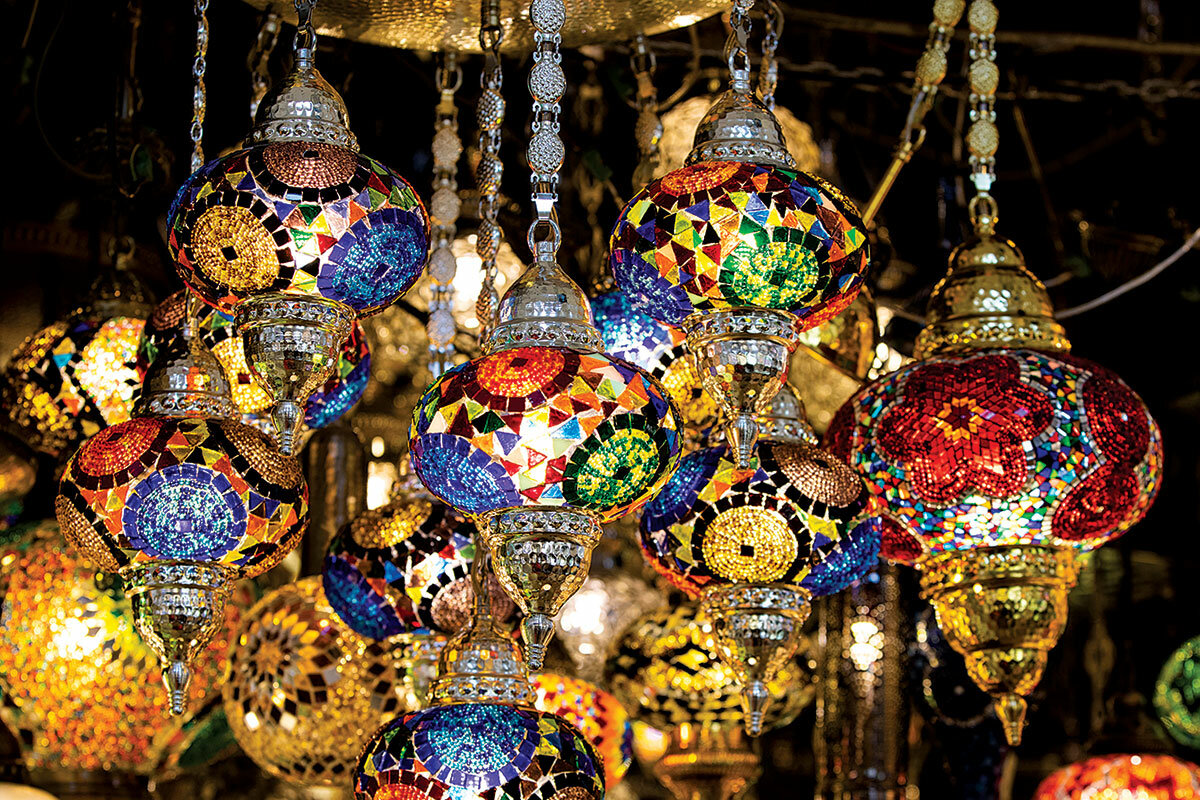
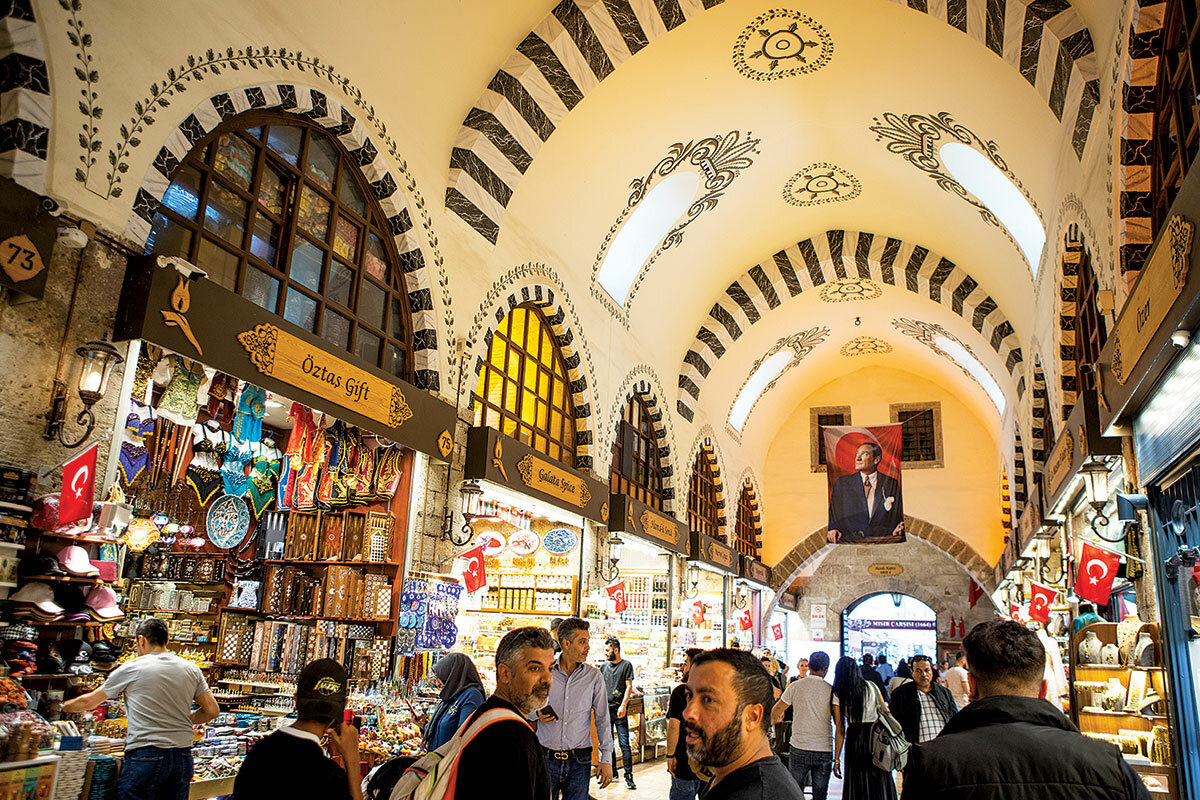


Podcast
Taylor Swift’s ‘moment’ keeps growing. A reporter (and fan) shows why.
If you first heard about her in connection with a football player, then you’re very, very late to the party. Taylor Swift’s tally of hits, achievements, and accolades is now longer than a stadium-show set list. But her greatest success might be rooted in her power to joyously grow community.

Just singing about boyfriends and breakups doesn’t win you Time magazine’s person of the year. Or get a Harvard course created to study your social impact. Or make the word that describes a member of your fan club a finalist for the Oxford University Press word of the year.
Yet multi-Grammy winner, Billboard record-setter (the first living act to land five albums in the Top 10, concurrently), and economic juggernaut Taylor Swift still sometimes gets underestimated. Why is that?
On-staff “Swiftie” Isa Meyers wrote a story exploring the breadth of this artist as a phenomenon and touching on the pushback. This week she joined our “Why We Wrote This” podcast to talk about it.
“Ever since she first started her career,” Isa says, “she’s always been into her relationship with her fans.” Ms. Swift, the artist and the person, is both authentic and imperfect. There are always social issues that some would like to hear more on from anyone with such a platform, Isa points out.
A major reason Ms. Swift thrives: the community she engenders. Ms. Swift cares in a way that seems authentic, Isa says. She is reliably and unabashedly herself, standing up for girlhood and friendship in ways that push back on those who might dismiss them or try to shame elements of them.
“You ... listen to Taylor, and she gives a glimmer of joy and hope ... and I think that that’s really what drove my story,” Isa says, “figuring out how to show her impact – [and] not just through the numbers.” – Clayton Collins and Mackenzie Farkus
You can find story links and a transcript here.
The Transcendent Power of ‘Swiftie’ Nation
Other headline stories we’re watching
(Get live updates throughout the day.)The Monitor's View
Ukraine vanquishing the other enemy
- Quick Read
- Deep Read ( 2 Min. )
-
By the Monitor's Editorial Board
In Ukraine, where nearly two years of Russian attacks have destroyed the property of 1 in 6 people, a survey last month found a surprising result. Some 65% of those with damaged property – homes, cars, or businesses – did not apply for official compensation.
It was not that they didn’t need the money. Rather, more than a third said the government had more urgent priorities – like saving Ukraine as a sovereign nation. Some 12% said other people suffered worse and deserve support first.
Despite fatigue and disappointment with the war, Ukrainian “society continues to demonstrate maturity and willingness to compromise its own interests for the needs of others,” stated Anastasiya Mazurok, a deputy executive director at Transparency International Ukraine, a watchdog group that arranged the survey.
Demonstrations of selfless goodwill are crucial on two of Ukraine’s nonwar fronts: curbing corruption and preparing for postwar restoration with foreign aid. Fewer people are reporting personal experiences with daily corruption, finds Transparency International.
Ukraine vanquishing the other enemy
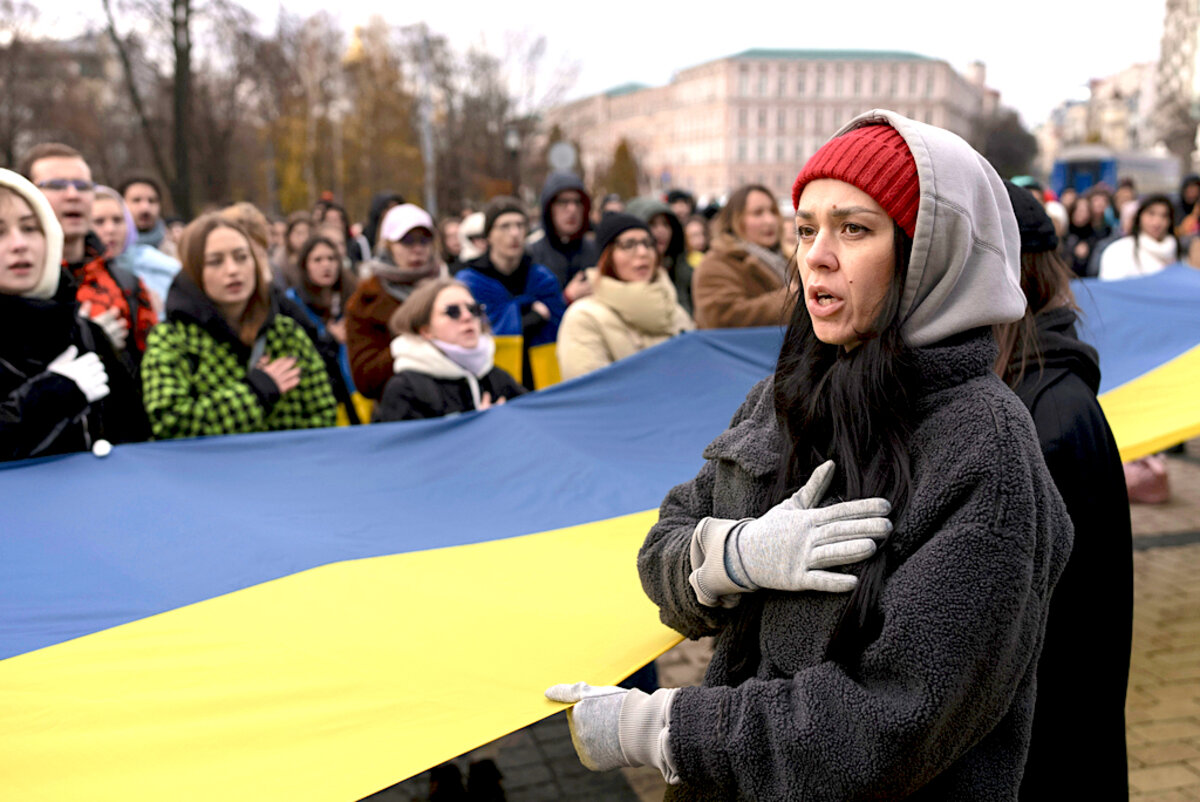
In Ukraine, where nearly two years of Russian attacks have destroyed the property of 1 in 6 people, a survey last month found a surprising result. Some 65% of those with damaged property – homes, cars, or businesses – did not apply for official compensation.
It was not that they didn’t need the money. Rather, more than a third said the government had more urgent priorities – like saving Ukraine as a sovereign nation. Some 12% said other people suffered worse and deserve support first.
Despite fatigue and disappointment with the war, Ukrainian “society continues to demonstrate maturity and willingness to compromise its own interests for the needs of others,” stated Anastasiya Mazurok, a deputy executive director at Transparency International Ukraine, a watchdog group that arranged the survey with support from the United States.
Demonstrations of selfless goodwill are crucial on two of Ukraine’s nonwar fronts: curbing corruption and preparing for postwar restoration with foreign aid. One other surprise in the November survey was that while fear of destruction from the war has fallen, perception of the risks of corruption has risen by 11 percentage points.
The reason for the increase is probably not that graft itself has gone up – despite recent high-profile examples. Rather, corruption has gained exposure under major reforms by government and concerns among foreign donors over potential misuse of aid. In addition, Russian propaganda has fed back reports of corruption into news coverage of Ukraine.
“The media is used to looking where there is bad, and not noticing what is already good” about anti-corruption efforts, stated Ms. Mazurok.
As the war settles into a long slog, Ukrainians have refocused on daily domestic issues. According to the survey, corruption in particular is viewed as an internal enemy nearly as much as Russia is as an external enemy. It is seen as a remnant of Soviet-era colonialism now being expelled by the lifting of democratic virtues in a cohering Ukrainian identity.
Fewer people are reporting personal experiences with daily corruption, finds Transparency International. A good example of how individuals want to help reinforce clean governance is the rising adoption of an app that allows citizens to pay for public services online and avoid interaction with government workers who might seek a bribe.
Ukraine’s progress in reforms has hastened the process of it joining the European Union. The EU’s top leaders will decide next week whether to proceed with Ukraine’s candidacy. “To see the deep and structural reforms that Ukraine is doing while fighting an existential war is to me deeply impressing,” said European Commission President Ursula von der Leyen last month.
Yet according to Transparency International, the real evidence of change is in the thinking of Ukrainians, noticed lately in how those with damaged property forgo compensation for the sake of both saving and rejuvenating their country.

A Christian Science Perspective
Each weekday, the Monitor includes one clearly labeled religious article offering spiritual insight on contemporary issues, including the news. The publication – in its various forms – is produced for anyone who cares about the progress of the human endeavor around the world and seeks news reported with compassion, intelligence, and an essentially constructive lens. For many, that caring has religious roots. For many, it does not. The Monitor has always embraced both audiences. The Monitor is owned by a church – The First Church of Christ, Scientist, in Boston – whose founder was concerned with both the state of the world and the quality of available news.
The power behind the Word
- Quick Read
- Read or Listen ( 3 Min. )
-
By Kathryn Jones Dunton
The inspiration of God is able to break through discordant experiences and reveal our innate harmony.
The power behind the Word
The Alps were breathtaking. Overcome by deep gratitude for the amazing vista before me, I took a picture with my tablet. But I looked at the image with disappointment. The picture could not adequately capture the majestic mountains as I was experiencing them.
Just as my photograph was unable to capture the beauty and grandeur of the Alps, words are inadequate to completely express spiritual reality. Words are vessels for expressing ideas, but the reality of divine Spirit, God, and God’s spiritual creation is much more wonderful and vast than mere words can convey.
In her book “Science and Health with Key to the Scriptures,” Mary Baker Eddy acknowledges the limitations of language: “The chief difficulty in conveying the teachings of divine Science accurately to human thought lies in this, that like all other languages, English is inadequate to the expression of spiritual conceptions and propositions, because one is obliged to use material terms in dealing with spiritual ideas” (p. 349).
As we strive to understand the spiritual reality behind the words written in the Bible and Science and Health, we can go beyond mere memorization of them to the practical application of the ideas the words convey, demonstrating their deeper meaning. The Bible and Mary Baker Eddy’s writings provide inspiration that awakens us to the kingdom of heaven within us. And as we put into practice the ideas and guidance provided by these spiritual writings, we are enabled to actually feel God’s presence and power through spiritual sense – the “conscious, constant capacity to understand God” (Science and Health, p. 209) which we each possess. This gives us the ability to understand spiritual reality.
Science and Health also states, “The great miracle, to human sense, is divine Love, and the grand necessity of existence is to gain the true idea of what constitutes the kingdom of heaven in man” (p. 560).
Through his teaching and example, Christ Jesus showed us the link between divine Love and the kingdom of heaven. He knew who he was as God’s entirely spiritual and perfect Son. He felt God’s great love for him and expressed this healing and inspiring love to everyone he met. Enveloped in God’s limitless love and feeling his oneness with God, he experienced the harmony of the kingdom of heaven. As we pray to follow Jesus’ example, we too can experience the kingdom of heaven wherever we are, since we’re God’s precious spiritual reflection.
“Jesus beheld in Science the perfect man, who appeared to him where sinning mortal man appears to mortals,” we read in Science and Health (pp. 476-477). This statement expresses the highest sense of love because it entails perceiving the world from God’s loving perspective instead of viewing it through what the material senses are telling us. As we focus on and feel the love God has for everyone, we will experience the peace of living in the kingdom of heaven.
I learned about the healing effect of bringing my thought in line with divine Love when I was beginning my doctoral studies. My school had a competitive atmosphere that made me feel angry and afraid. Around this time, I experienced a flare-up of the eczema that had plagued me as a child.
At first, when I called a Christian Science practitioner for help through prayer, I would listen to her loving words, hang up, and then examine the eczema. Finally, it dawned on me that I had to stop looking at the problem and really examine my thought. I realized I needed to feel more love for myself and everyone in my new school because I knew that we are all, in truth, the expression of divine Love, and spiritual love casts out fear and is the antidote for anger. I strove to look beyond the material evidence of competitiveness and abrasiveness to see the children of God’s creating.
As I became more consistent in letting God’s love and peace take hold of my thought, the eczema was healed, and I felt free to enjoy my experience at this school. In the decades since, I haven’t had another outbreak of this condition.
Divine Love is the power behind the Word, and we can always reside in the kingdom of heaven as we choose to turn away from what the mortal senses are telling us and instead see the world from God’s loving perspective. Living in the kingdom of heaven, where we always truly reside, is a choice we make every moment as we love as Jesus loved.

Viewfinder
An eye on the light
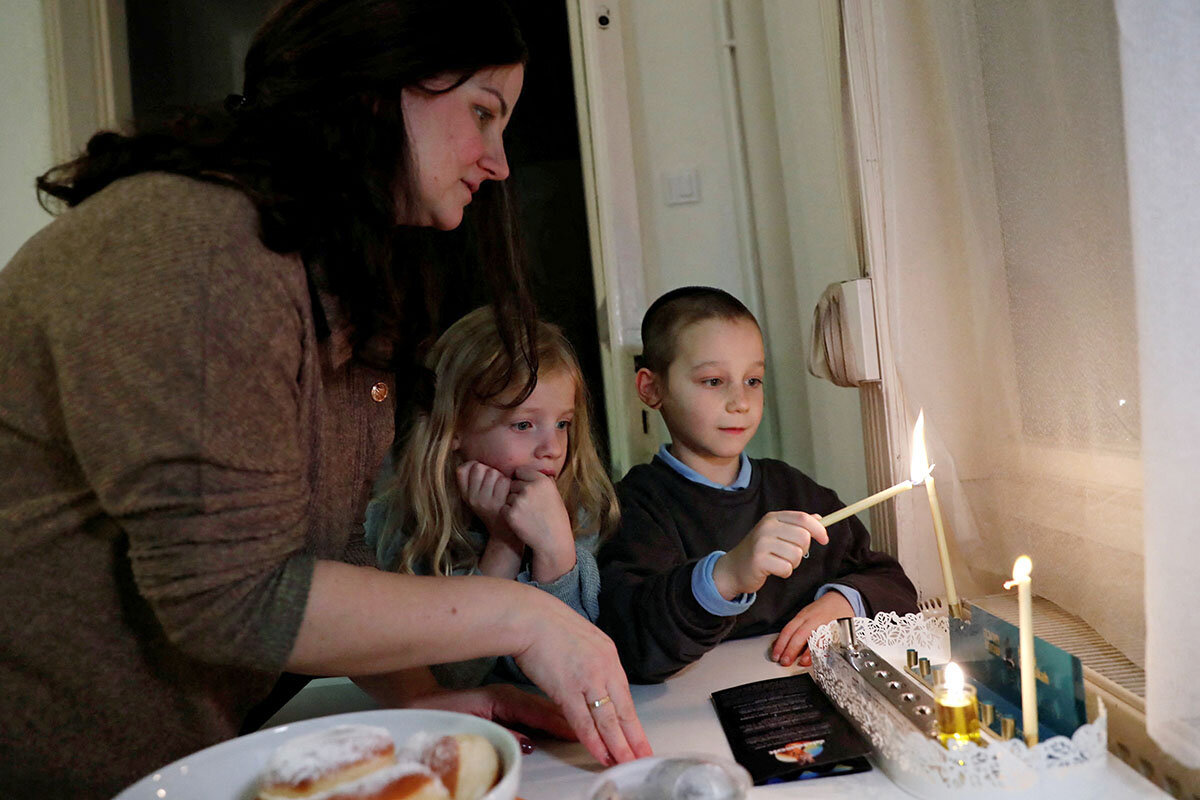
A look ahead
Thank you for joining us today, and we hope you have a wonderful weekend. When you come back, we’ll have our next installment in the Climate Generation series, looking at how some young people are renewing their connection to the land as farmers – with interesting results. We’ll also examine the latest effort to address the migrant crisis in Europe.


